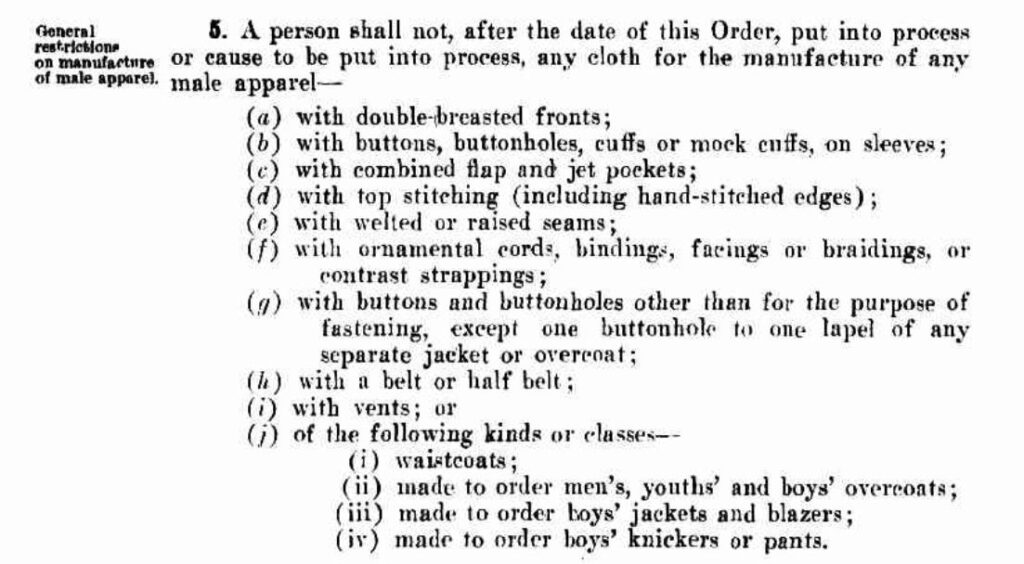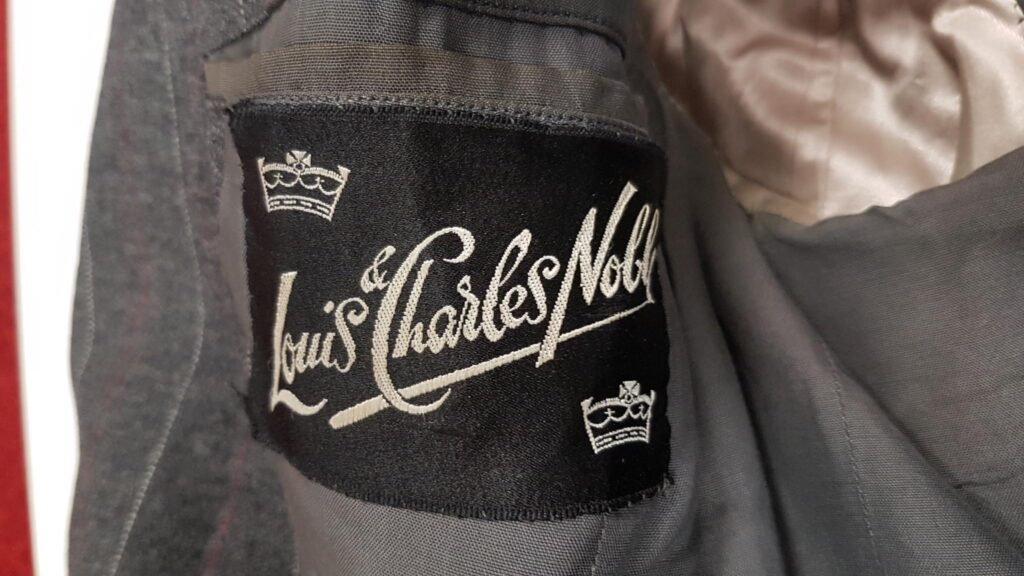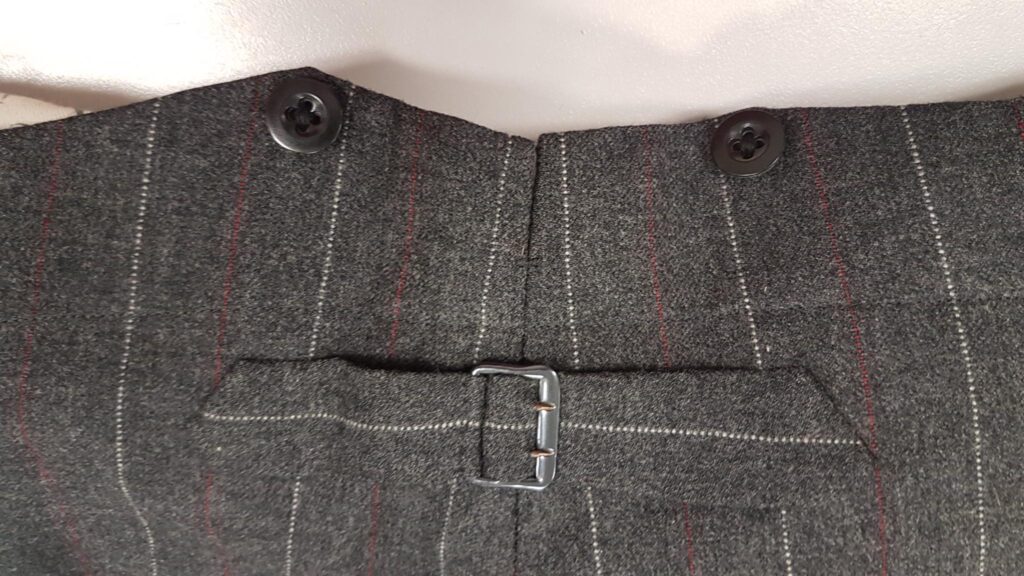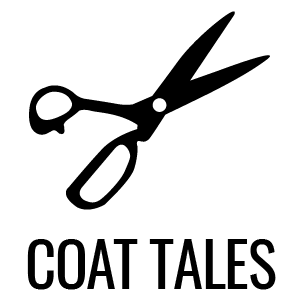Recently I wrote about World War II clothes styling regulations and their impact on men’s suits. As they were ‘streamlined for victory’, suits were stripped of elements that in wartime became superfluous.
The ‘Victory Suit’ – so called because the savings made in fabric and other supplies could be allocated to the nation’s war effort – was far from universally popular. Anticipating this, John Dedman, Minister for War Organisation of Industry, spruiked the first victory suit in a short film for the Australian public.
He outlined how fashionable double-breasted jackets used too much fabric when single-breasted would do. Buttons and buttonholes on sleeves and turned-up trouser cuffs might look stylish, but wasted buttons and thread that could be used for functional purposes elsewhere. Likewise, trims and top-stitching created a tailored finish but could be done without.

I watched the film many times with an eye trained on these differences – and each was there on the suit he modelled – but knew that examining a surviving suit might tell me more. But had any been acquired by museums during or after the war, or in the decades to follow?
I suspected this was unlikely either because they had been worn out or unceremoniously disposed of: perhaps as they looked embarrassingly dowdy when clothes styling regulations again lifted, or were an unwelcome reminder of civilian sacrifice during the war years.
The Australian War Memorial’s collection search, however, displayed a tantalisingly brief record:
‘Victory suit’ or ‘Dedman’ economy suit, introduced by Mr Dedman, Minister of War Organisation of Industry during the 1939-1945 war. The suit was designed to reduce wastage.
Intrigued, I arranged a visit. The dark grey suit with its red and white pinstripes brought out of the collection store looked surprisingly familiar. I reasoned this was as it followed Dedman’s regulations outlined in the ‘Control of Clothing (Male Outerwear) Order’ in July 1942 to the letter.

But perhaps more surprising was that for all the encouragement over the war years to save fabric – or the often-repeated appeal to ‘make do and mend’ – the suit showed very few signs of wear. Why would a victory suit be made, and the one in front of me was beautifully tailored and hand finished, if not to be worn?

The acquisition documentation provided answers to my questions. This victory suit was the same suit worn by Dedman in his short black and white film to promote the new style – the one in which I had watched him enter his office, sit behind his desk, and gesture to its various features.
It was, in fact, the first sample made according to the new clothes styling restrictions, manufactured for the Department of the War Organisation of Industry to demonstrate the new look that suits would take for the press.
In 1943, the Department contacted the Australian War Memorial to see if the suit might be of historical interest. I, for one, am glad they recognised its significance. The result is that Australia’s first victory suit has a safe, permanent home where researchers like me can see how it was made and consider its importance to Australia’s everyday dress across the twentieth century.
An excellent description of John Dedman’s victory suit, and number of photographs, are now available on the Australian War Memorial’s website.
My thanks to curator Jane Peek at the Australian War Memorial for so kindly facilitating my visit and for discussing John Dedman’s fascinating suit.
References
Australian War Memorial, ‘Victory Suit’: Mr John J. Dedman, Minister of the Department of War Organisation of Industry, REL/00039.001 & REL/00039.002: https://www.awm.gov.au/collection/C212565 / https://www.awm.gov.au/collection/C212577.
Australian War Memorial, ‘Aust. “Victory Suit” donated by Dept. of War Organisation of Industry’, File No. 55/3/45/4.
John J. Dedman, ‘National Security (General) Regulations: Control of Clothing (Male Outerwear) Order’, Commonwealth of Australia Gazette, no. 209, 31 July 1942, p. 1838.
The National Films Council of The Department of Information presents A War Organisation of Industry Production, John Dedman in ‘Victory Suit’, 35mm black and white film, directed by Ralph Smart, commentary by Harry Dearth, Australian War Memorial Collection, F01641: https://www.awm.gov.au/collection/C189026.
